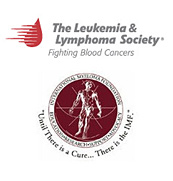Dealing with Daubert in California: The Perspective of a Plaintiff’s Attorney
by Raphael Metzger, Esq.
The Problem
Daubert is death and disaster to Plaintiffs’ attorneys! Any toxic tort case in federal court is dicey for two reasons.
First, the Supreme Court has deputized federal district judges as “gatekeepers,” authorizing them to exercise broad discretion to exclude whatever evidence they deem not to meet scientific standards of admissibility. Daubert v. Merrell Dow Pharmaceuticals, Inc., 509 U.S. 579, 113 S.Ct. 2786 (1993). A ruling excluding testimony of a plaintiff’s experts on medical causation inevitably results in summary judgment in favor of the defendants and against the injured plaintiff.
Second, when a federal district judge excludes testimony of the plaintiff’s experts under Daubert, the judge’s decision will be affirmed on appeal even if the appellate court disagrees with the district judge’s decision, so long as the district court judge did not abuse his discretion. General Electric v. Joiner, 522 U.S. 136, 118 S.Ct. 512, 139 L.Ed.2d 508.
Since a substantial investment of time and money is necessary to prove a toxic tort case and the risk of loss of any toxic tort case is significant, litigating a toxic tort case in federal court as the federal courts apply Daubert and Joiner is a venture that should give any sane toxic tort litigator pause.
Fortunately, for toxic tort attorneys litigating toxic tort cases in California, there is a solution to the Daubert/Joiner problem.
Reasoning the Way Towards a Solution: Differences between Federal and California Law
Daubert has no application to toxic tort cases in California courts. In People v. Leahy, 8 Cal.4th 587, 34 Cal.Rptr.2d 663, 882 P.2d 321 (1994), the California Supreme Court rejected Daubert in favor of California’s Kelly-Frye Rule. In People v. Kelly, 17 Cal.3d 24, 130 Cal.Rptr. 144, 549 P.2d 1240, the California Supreme Court adopted the rule of Frye v. United States, 293 F. 1013 (D.C. Cir. 1923). Hence, the Kelly-Frye Rule! Since the Supreme Court held in Daubert that the Federal Rules of Evidence superseded the Frye Rule, the rule in California might properly be referred to now just as the Kelly Rule.
As interpreted by the California Supreme Court, the Kelly Rule is much different than Daubert. The Kelly Rule requires general acceptance in the scientific community and is, in this respect, a more conservative standard than Daubert, which considers general acceptance as just one fact indicating scientific validity. However, the Kelly Rule is extremely limited in scope and doesn’t even apply to causation opinions of medical and scientific experts!
To appreciate the difference between the Kelly-Frye Rule and Daubert, it is helpful to consider the two cases from which the rule originated: Frye v. United States, 293 F. 1013 (D.C. Cir. 1923) and People v. Kelly, 17 Cal.3d 24 (1976).
The issue in the Frye case was whether expert testimony based on polygraph (lie detector) tests could be admitted notwithstanding the novelty and unreliability of such tests. The issue in the Kelly case was whether expert testimony based on speaker identification by spectrographic analysis tests (voice print tests) could be admitted notwithstanding the novelty of such tests. The courts in both cases held that expert testimony based on the novel scientific techniques was not admissible, because the techniques themselves were not generally recognized as valid by the scientific community.
Thus, the Kelly-Frye Rule is an exclusionary rule of evidence which allows courts to exclude expert testimony that is based on controversial scientific techniques. The rule simply does not apply to exclude expert opinions unless they are based on novel and untested scientific techniques. This is shown by the by the following passage in Kelly:
The test for determining the underlying reliability of a new scientific technique was described in the germinal case of Frye v. United States (D.C. Cir. 1923) 293 F. 1013, 1014, involving the admissibility of polygraph tests: “Just when a scientific principle or discovery crosses the line between the experimental and demonstrable stages is difficult to define. Somewhere in this twilight zone the evidential force of the principle must be recognized, and while courts will go a long way in admitting expert testimony deduced from a well-recognized scientific principle or discovery, the thing from which the deduction is made must be sufficiently established to have gained general acceptance in the particular field in which it belongs.”
Kelly, supra, 17 Cal.3d at 30 (emphasis added).
In People v. Rowland (1992) 4 Cal.4th 238, the California Supreme Court held the Kelly-Frye Rule inapplicable to expert medical opinion by a doctor that the absence of genital trauma was not inconsistent with nonconsensual sexual intercourse. The court wrote:
We have never applied the Kelly-Frye Rule to expert medical testimony . . . ." (People v. McDonald, supra, 37 Cal.3d at p. 373.) We shall not do so now. Dr. Sierra's testimony implicated no "new scientific technique" (People v. Kelly, supra, 17 Cal.3d at p. 30) within the meaning of the rule. . . .
People v. Rowland, supra, 4 Cal.4th at 266.
In People v. Stoll (1989) 49 Cal.3d 1136, the Supreme Court succinctly held:
Kelly-Frye only applies to that limited class of expert testimony which is based, in whole or part, on a technique, process, or theory which is new to science and, even more so, the law.
Id., 49 Cal.3d at 1156 (emphasis added).
As previously mentioned, the continued viability of the rule was recently affirmed by the California Supreme Court in People v. Leahy, 8 Cal.4th 587 (1994). The Leahy court noted since its decision in Kelly, the Court had had numerous occasions to review and apply the doctrine in cases involving novel scientific techniques, and had done so without apparent difficulty or critical comment. Id. at 604, citing, People v. Diaz (1992) 3 Cal.4th 495, 525-528 [tissue sample analysis]; People v. Pride (1992) 3 Cal.4th 195, 238-239 [hair comparison analysis]; People v. Stoll (1989) 49 Cal.3d 1136, 1152-1161 [standardized personality tests]; People v. Bledsoe (1984) 36 Cal.3d 236, 245-251 [rape trauma syndrome]; People v. Shirley (1982) 31 Cal.3d 18, 51-54 [hypnotically induced testimony]
Each of the instances in which the Court applied the rule to exclude expert testimony, it did so not because of the opinion rendered by the expert, but because the scientific technique which formed the basis for the expert’s testimony had not been generally accepted by the scientific community.
Virtually every toxic tort case that has succumbed in federal court to a Daubert challenge was lost because a district court judge considered the opinions of the plaintiffs’ experts to be unscientific - not because the experts relied on any novel scientific techniques. Thus, most of the Daubert challenges successfully mounted in federal court wouldn’t even articulate a viable challenge to admissibility in California courts under the Kelly Rule.
The solution to the Daubert problem for California toxic tort litigators is therefore to file the toxic tort case in California state court and keep it there! How does one do this?
The Solution: Non-Diversity
Unless the United States is a necessary defendant or the case presents a federal question, a toxic tort case can be brought in state court, as long as complete diversity of citizenship is lacking. Thus, most toxic tort cases can be brought in California Superior Courts, as long as the plaintiff and at least one of the defendants are both California “citizens.” 28 U.S.C. § 1332(a). Once a California defendant is identified and the case is filed in California Superior Court, if the California defendant remains in the case for one year after commencement of the action, the case cannot be removed to federal court. 28 U.S.C. § 1446(b).
The solution to the Daubert dilemma is therefore finding a California defendant, filing the case in state court, and keeping the California defendant in the case for one year.
How does one find a defendant that is a “citizen” of the State of California?
First, investigate the chemical manufacturers you want to sue. Are any of them incorporated in the State of California? That will do. 28 U.S.C. § 1332(c). If none are incorporated in California, do any of them have their principal place of business in California? That will also do. 28 U.S.C. § 1332(c). A corporation’s principal place of business may be where it has its “nerve center” (where its executive and administrative functions are located), Metropolitan Life Insurance Co. v. Estate of Cammon, 929 F.2d 1220, 1223 (7th Cir. 1991); its “place of operations” (where most of the corporation’s physical operations are located), Kelly v. United States Steel Corp., 284 F.2d 850, 854 (3d Cir. 1960); or where its “total activities” are conducted. Industrial Tectonics, Inc. v. Aero Alloy, 912 F.2d 1090, 1094 (9th Cir. 1990).
If none of the manufacturers you want to sue are California citizens, look for other California citizens who would be proper defendants in the case. Investigate the chain of distribution of the injury-causing toxic product. Are any of the entities in the chain of distribution California citizens? What about the manufacturer or a distributor of the toxic ingredient or contaminant in the product that actually caused the injury? How about the owner of the premises where the injury occurred?
If the plaintiff was injured by exposure to a toxic chemical at work, determine whether the employer is a California citizen. The employer may be a proper defendant under one of the statutory exceptions to workers’ compensation exclusivity found in California Labor Code § 3602(b), or if the employer is uninsured. Cal. Labor Code § 3706.
Was a machine involved in the exposure? Was the toxic chemical dispensed by a machine? Did a machine fail to adequately control the plaintiff’s exposure to the toxic chemical? Was personal protective equipment inadequate? Any of the manufacturers of such machines or equipment may be proper defendants, as may be the companies in the chain of distributing the machines or equipment. Are any of them California companies?
Did a company certify the chemical product or the machine? If so, it may be liable for negligent certification of the product and might be sued if it is a California company.
If the plaintiff was injured by a prescription drug, the prescribing physician may be sued to defeat diversity of citizenship.
The more creative you are in crafting theories of liability against different potential defendants, the more likely you are to find a California defendant.
Conclusion
Finding a California defendant in toxic tort cases, suing that defendant in California Superior Court, and keeping that defendant in the case for one year is the easiest way to defeat Daubert. It’s simple and it works!
Raphael Metzger is the principal of the Metzger Law Group, a Professional Law Corporation. His firm concentrates its practice on occupational cancer, lung disease, and toxic organ failure cases. The firm’s offices are located in Long Beach, California.
Mr. Metzger files all of his California toxic tort cases in California Superior Court. He has never lost a Daubert motion. He attributes his perfect record in dealing with Daubert to his skill in identifying California defendants and keeping them in his cases for a year.
This article was prepared for the 8th Annual Meeting of the Toxic Torts and Environmental Law Committee of the American Bar Association, which was held at the Sheraton Torrey Pines in La Jolla, California, March 11-13, 1999.




